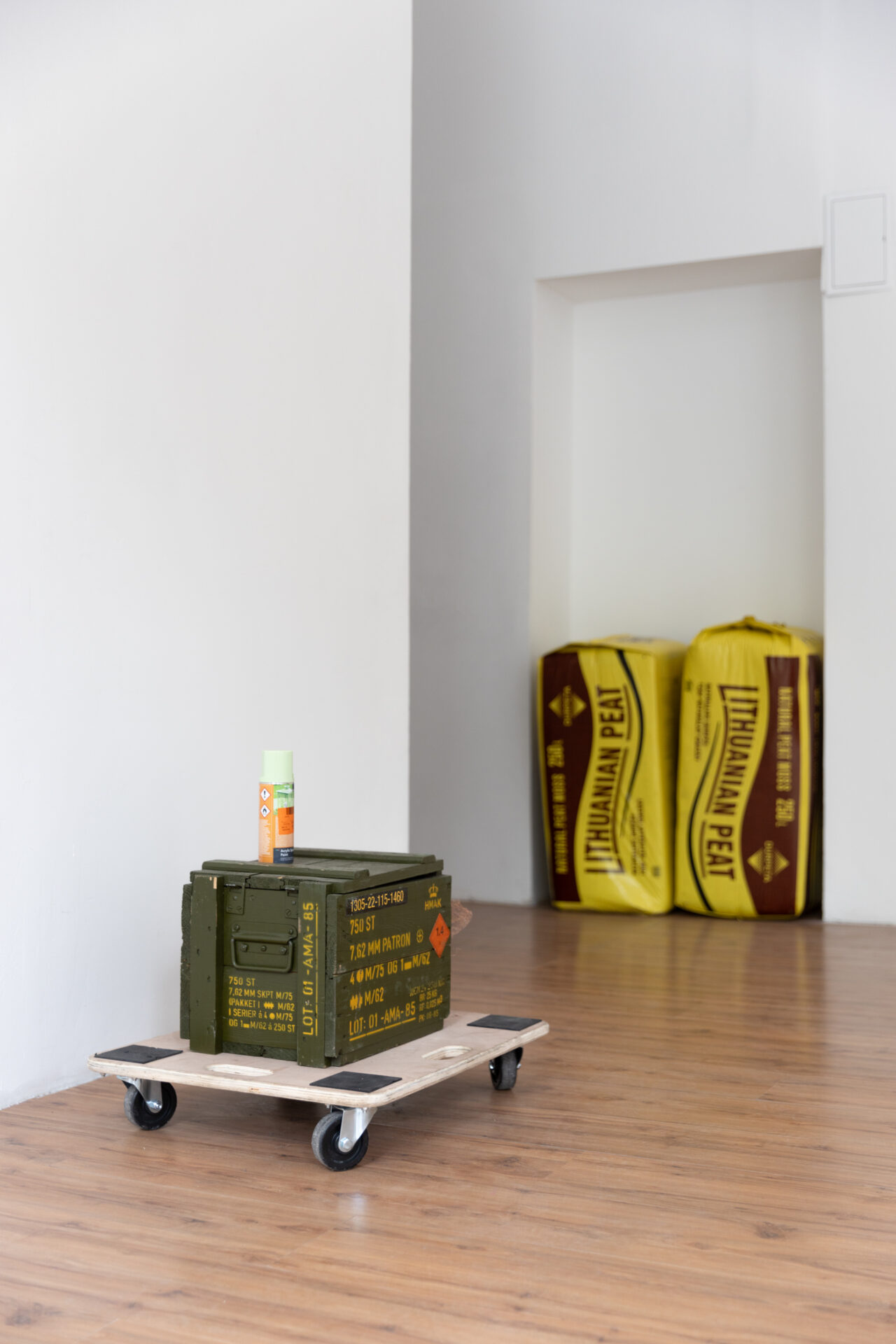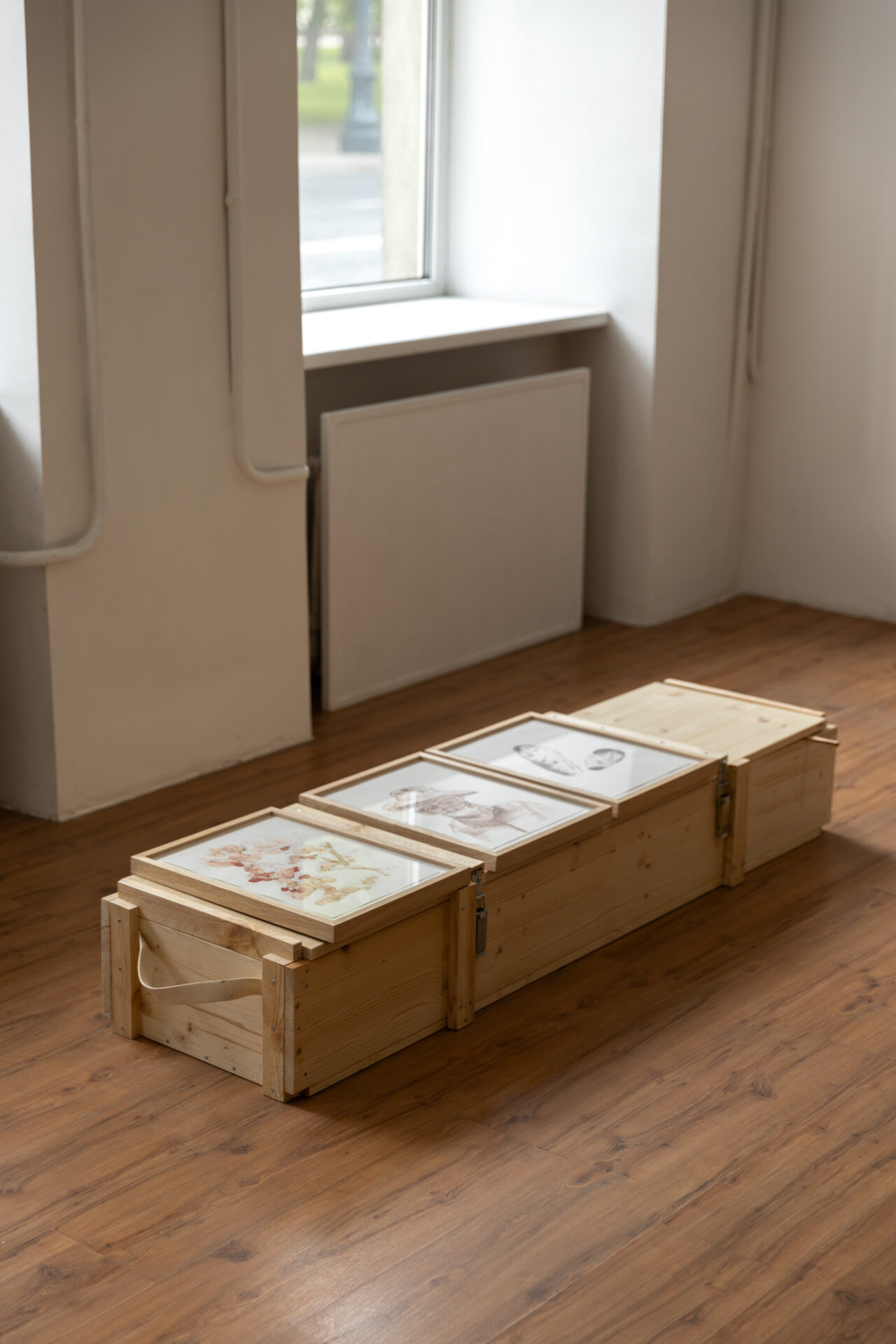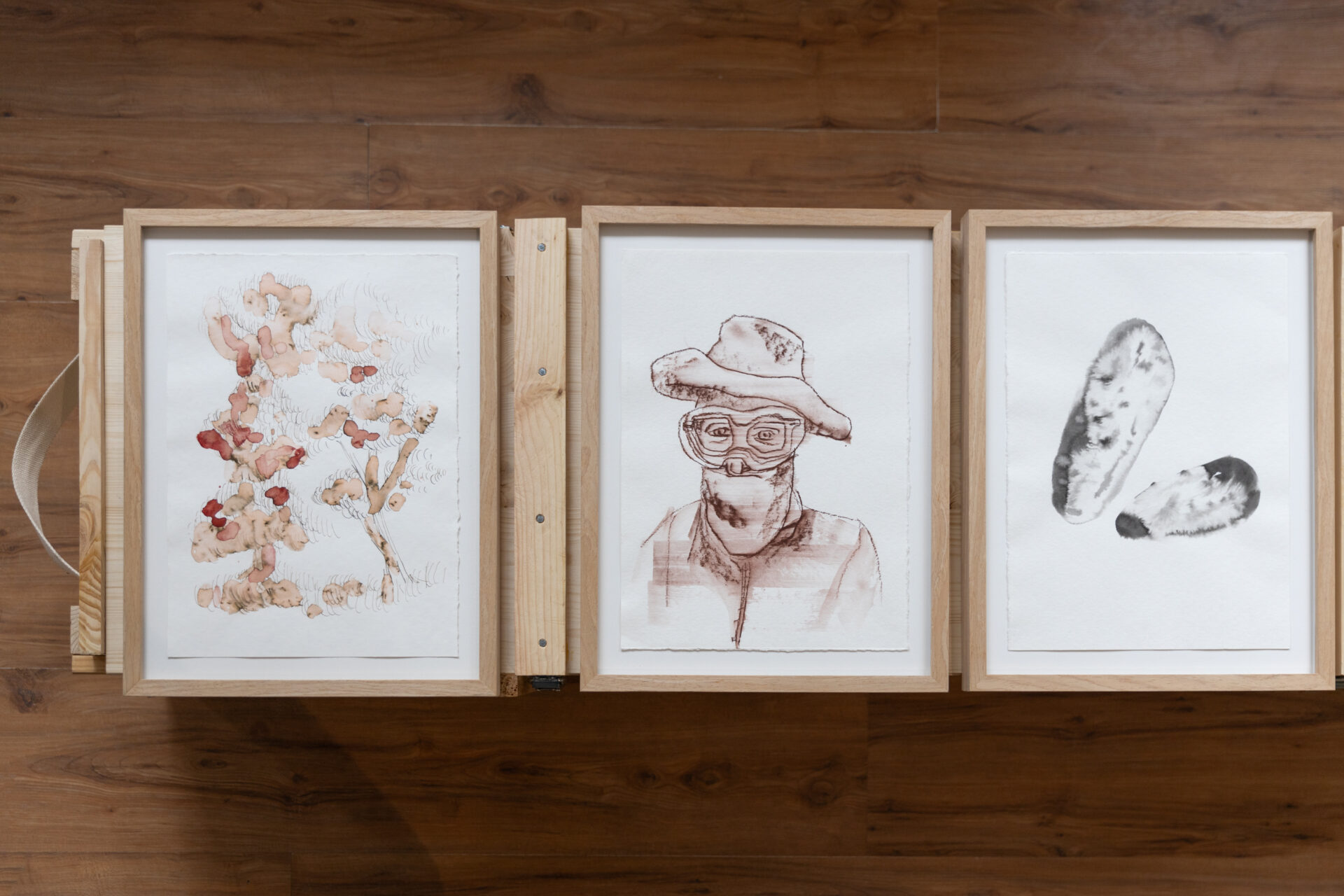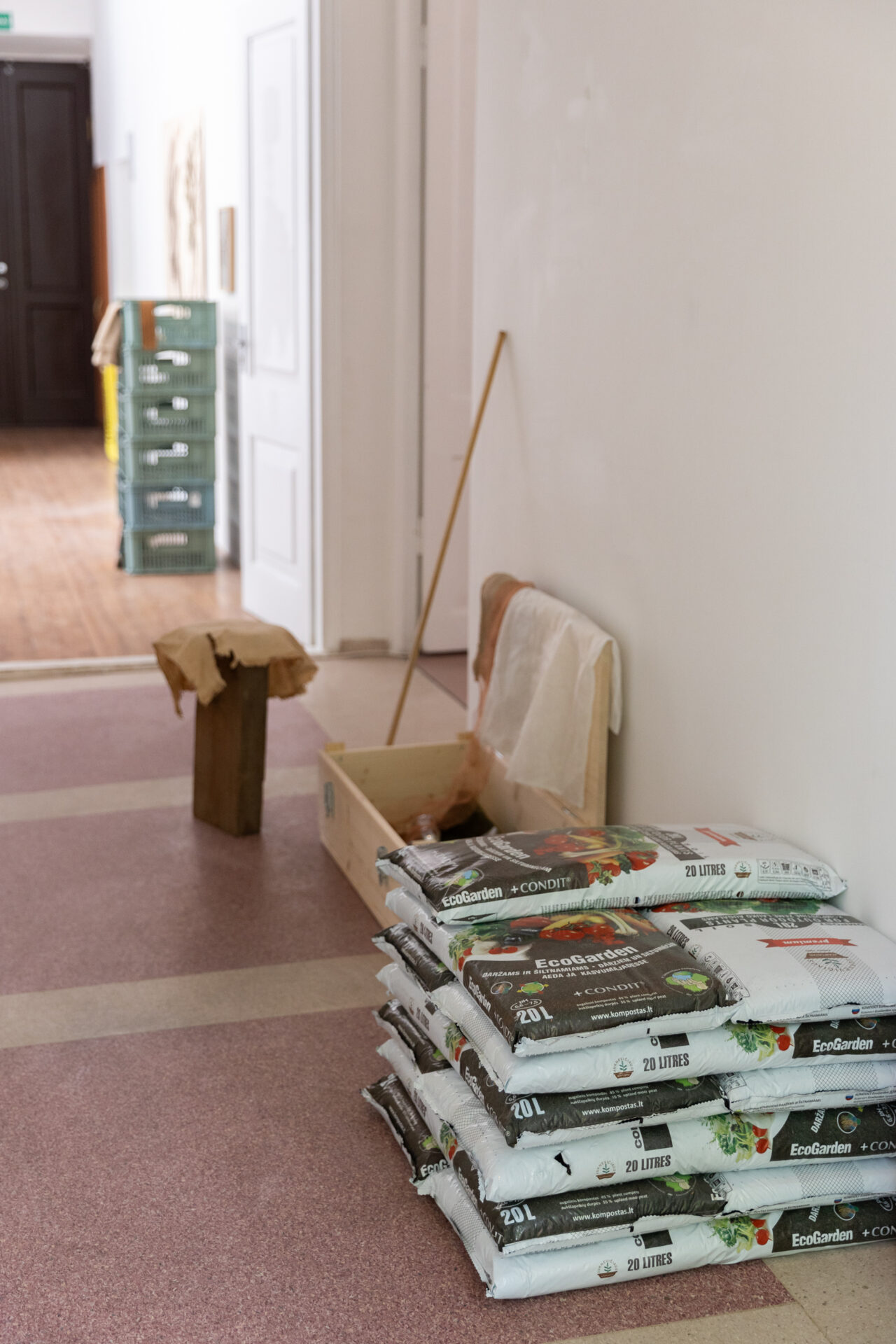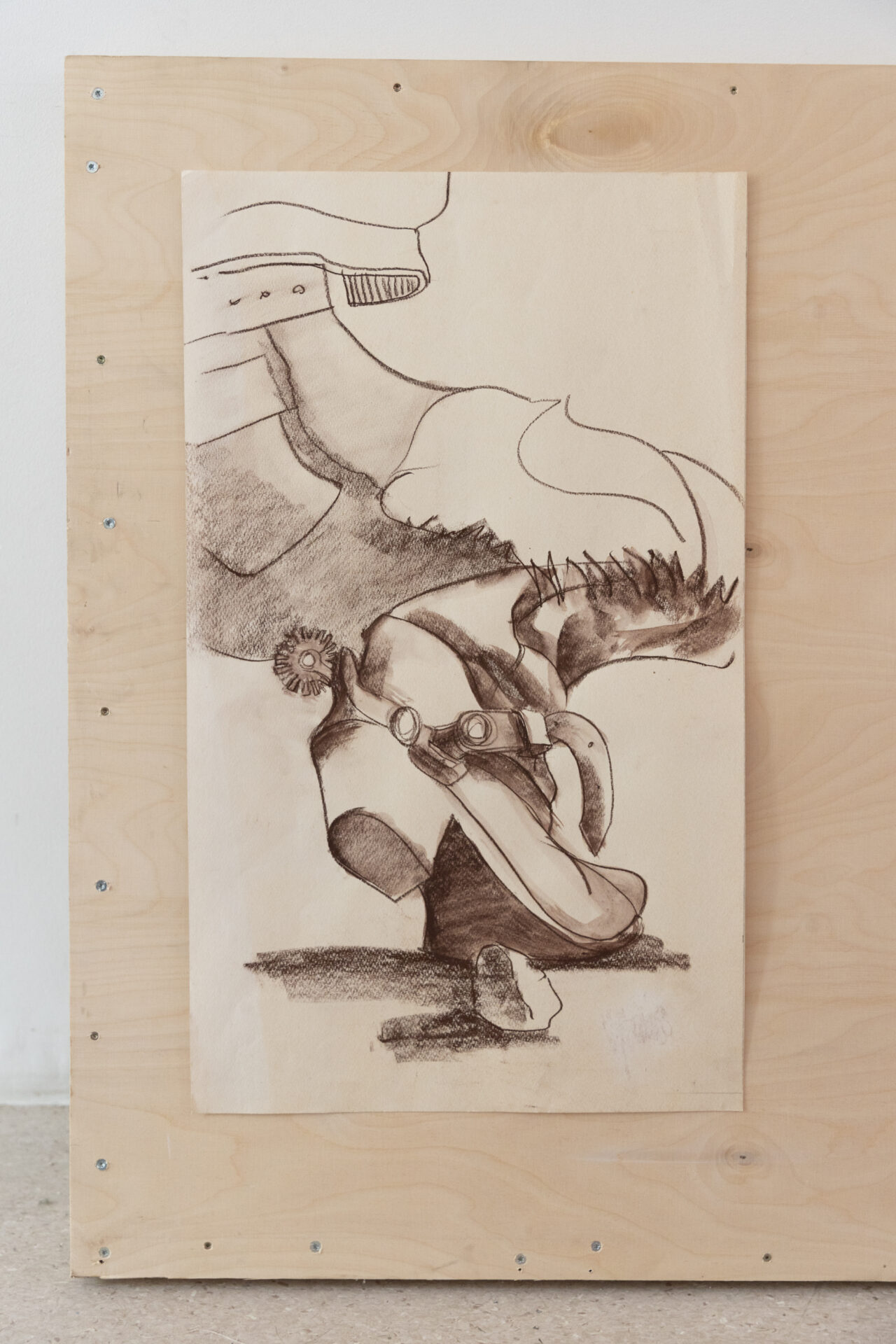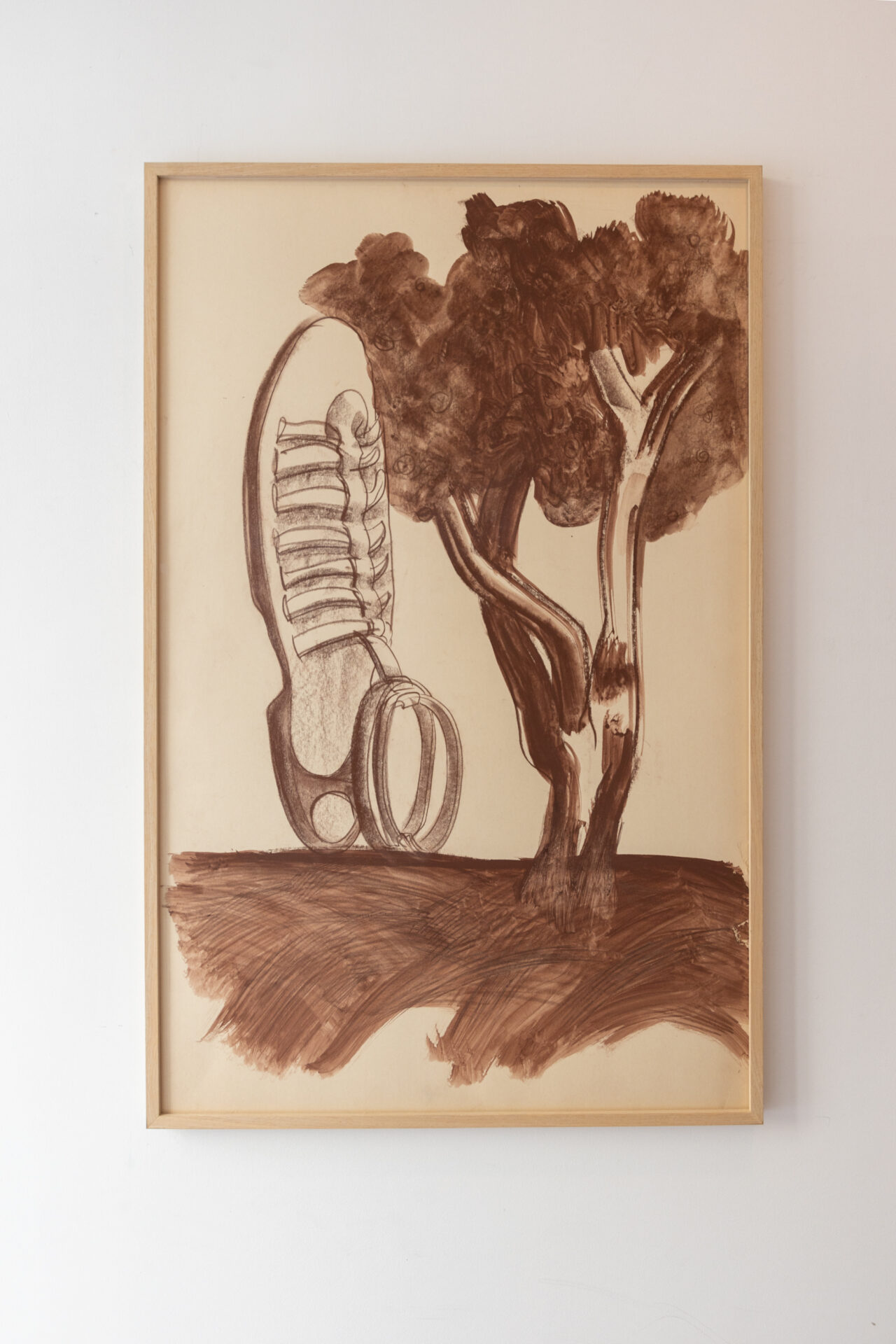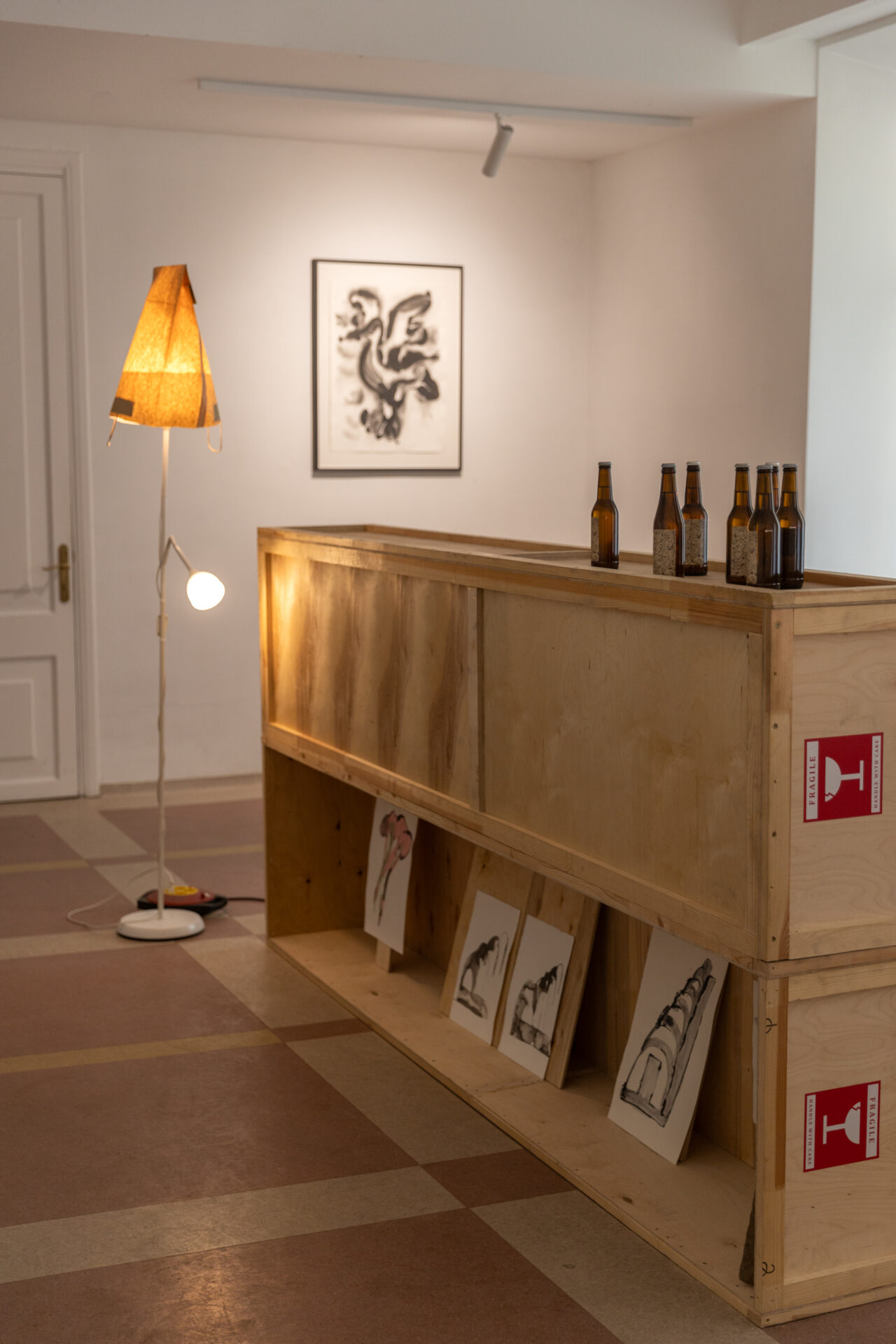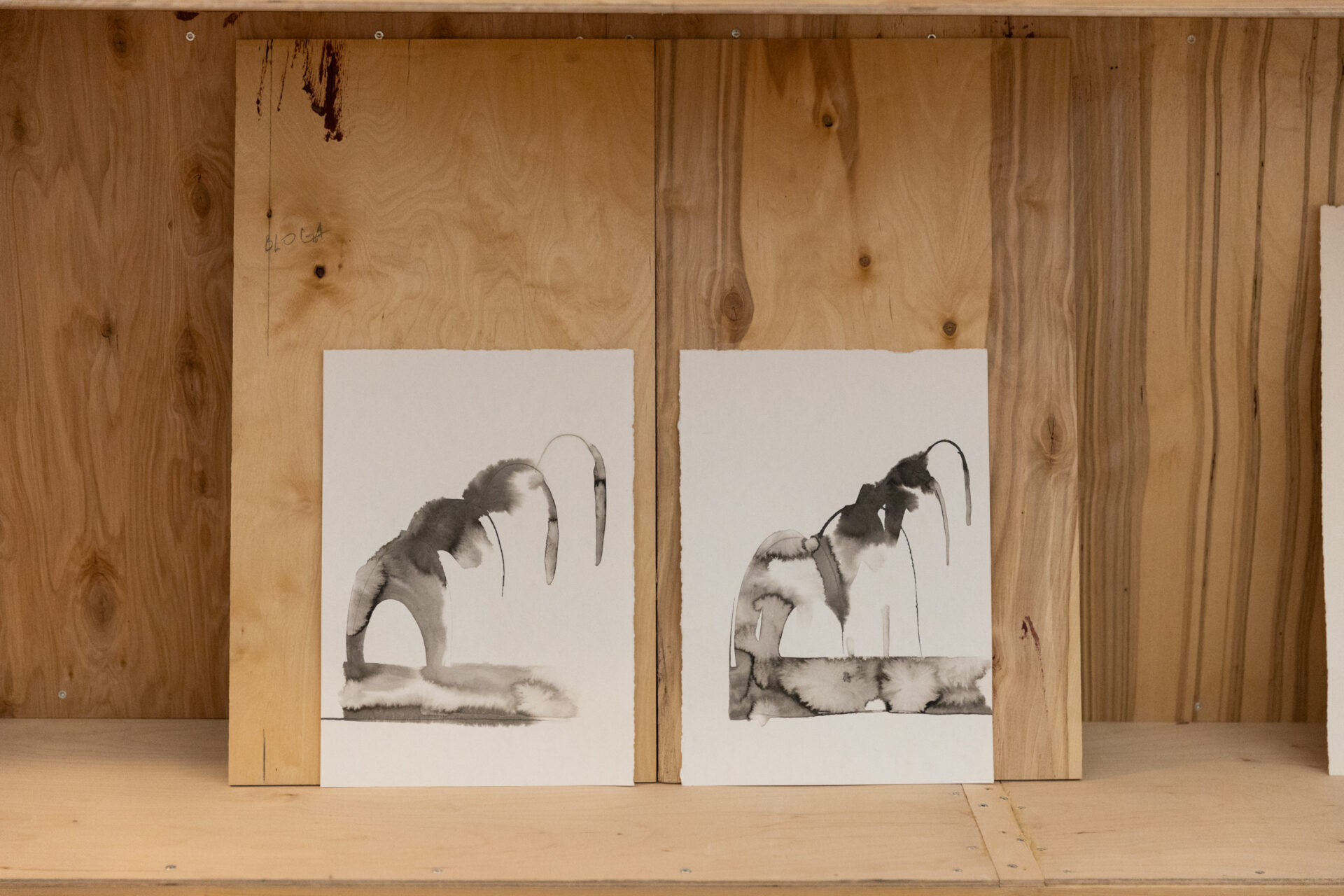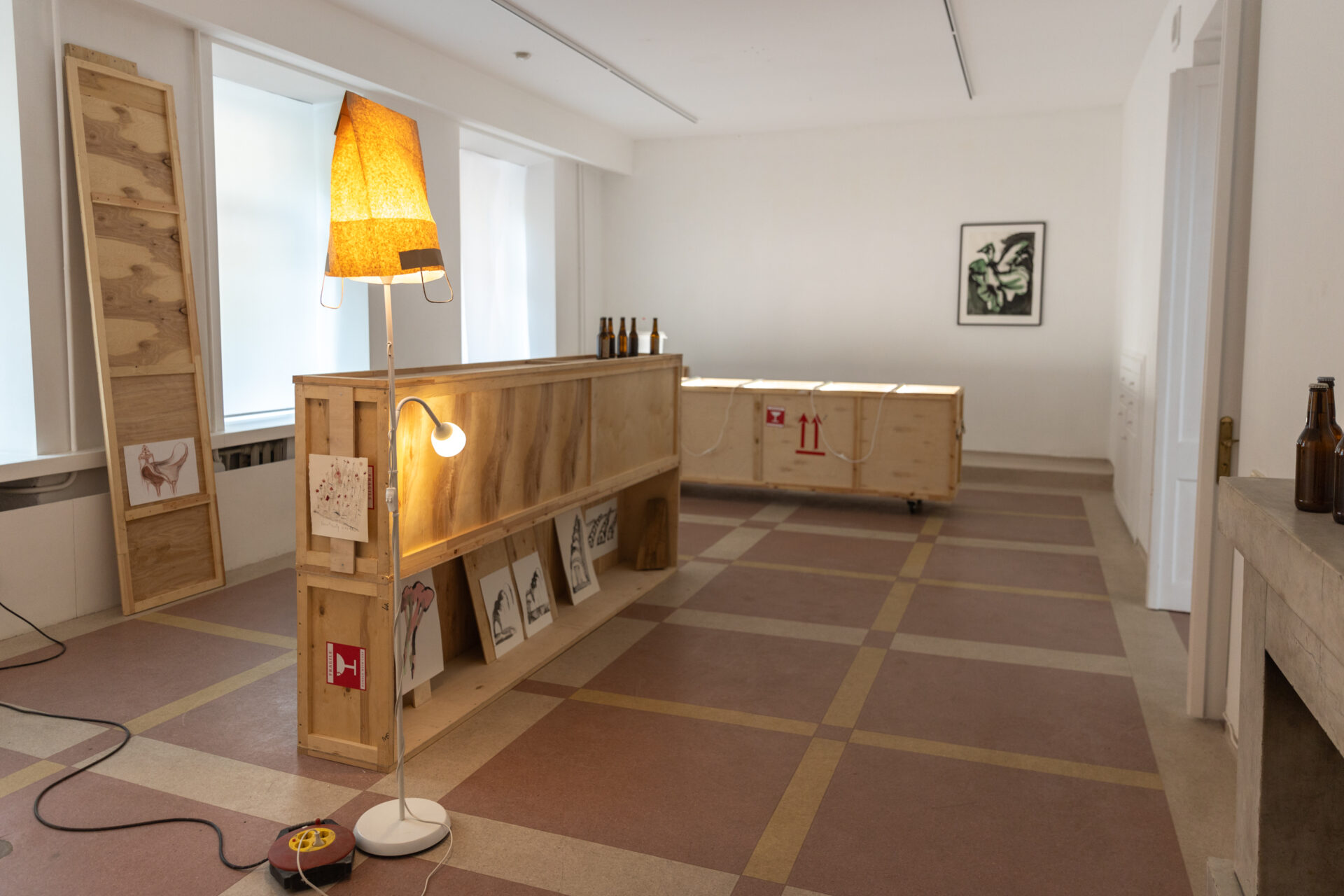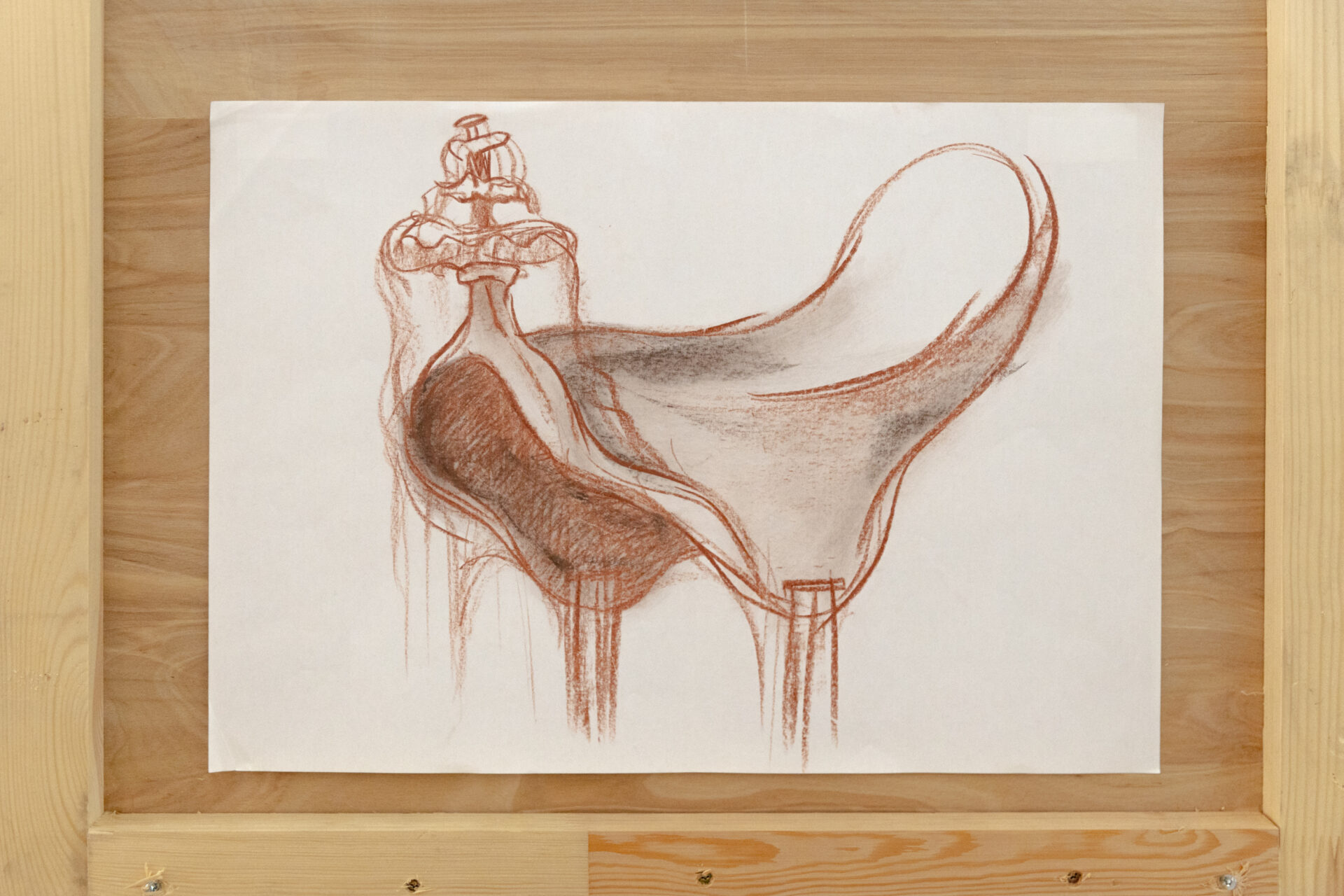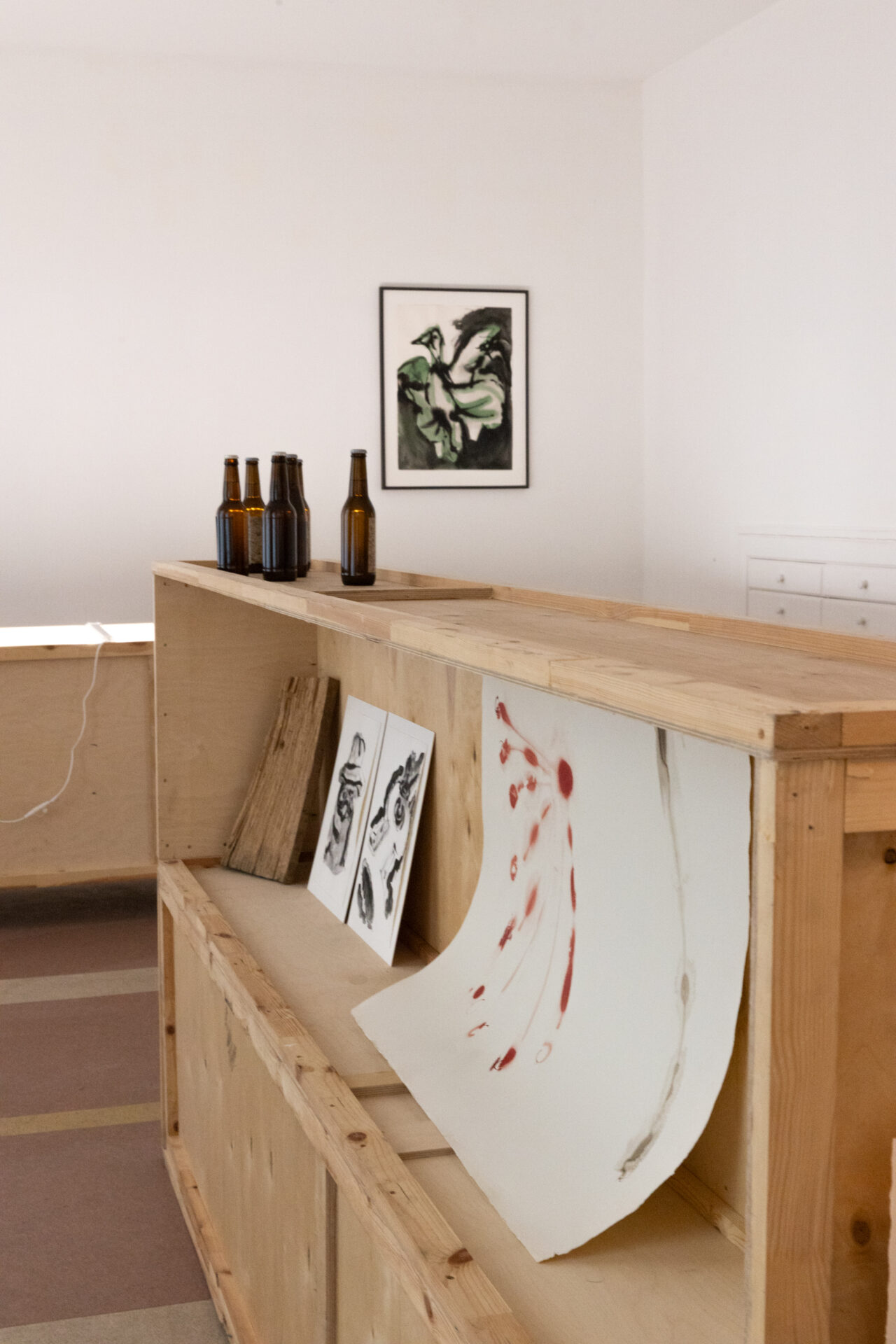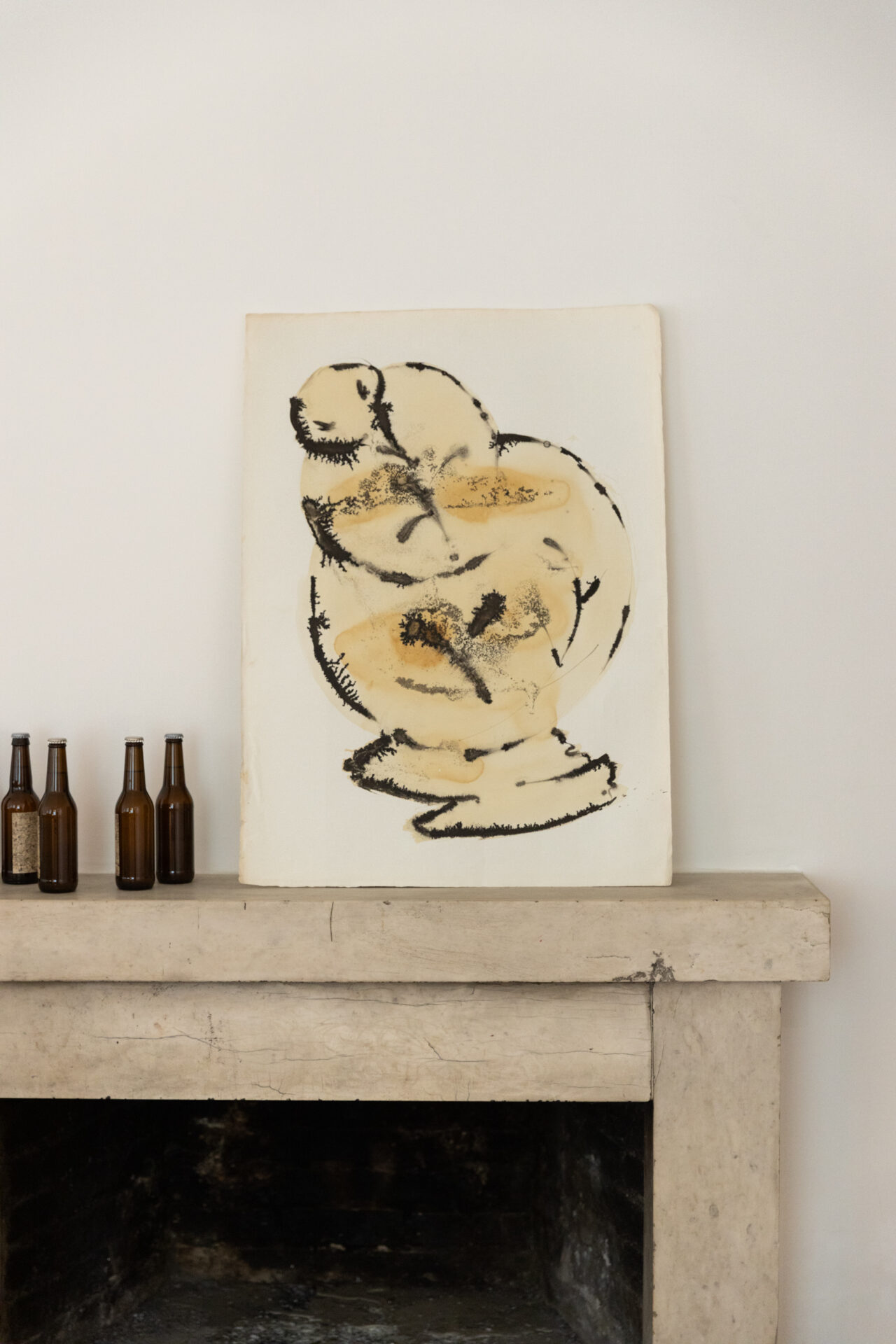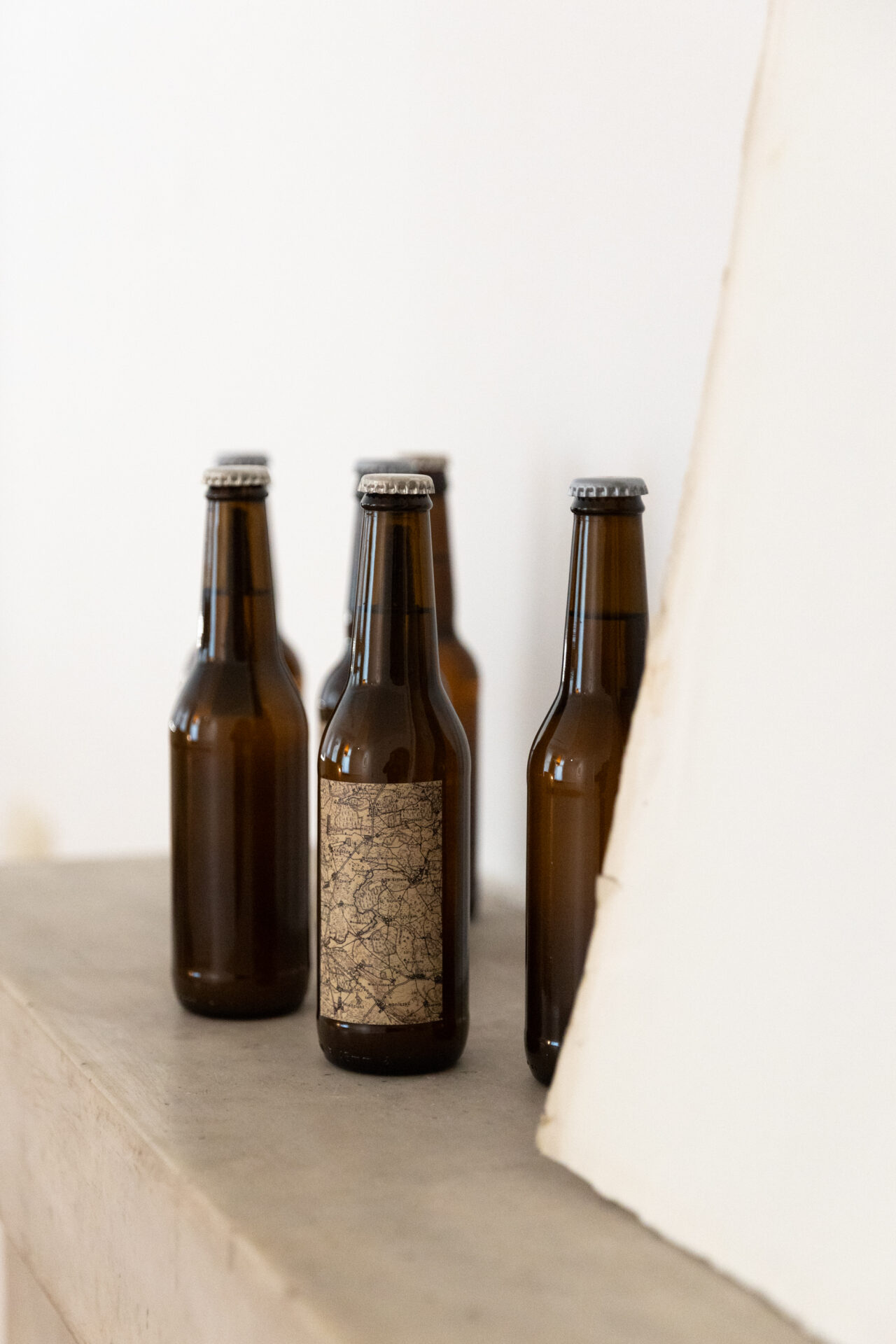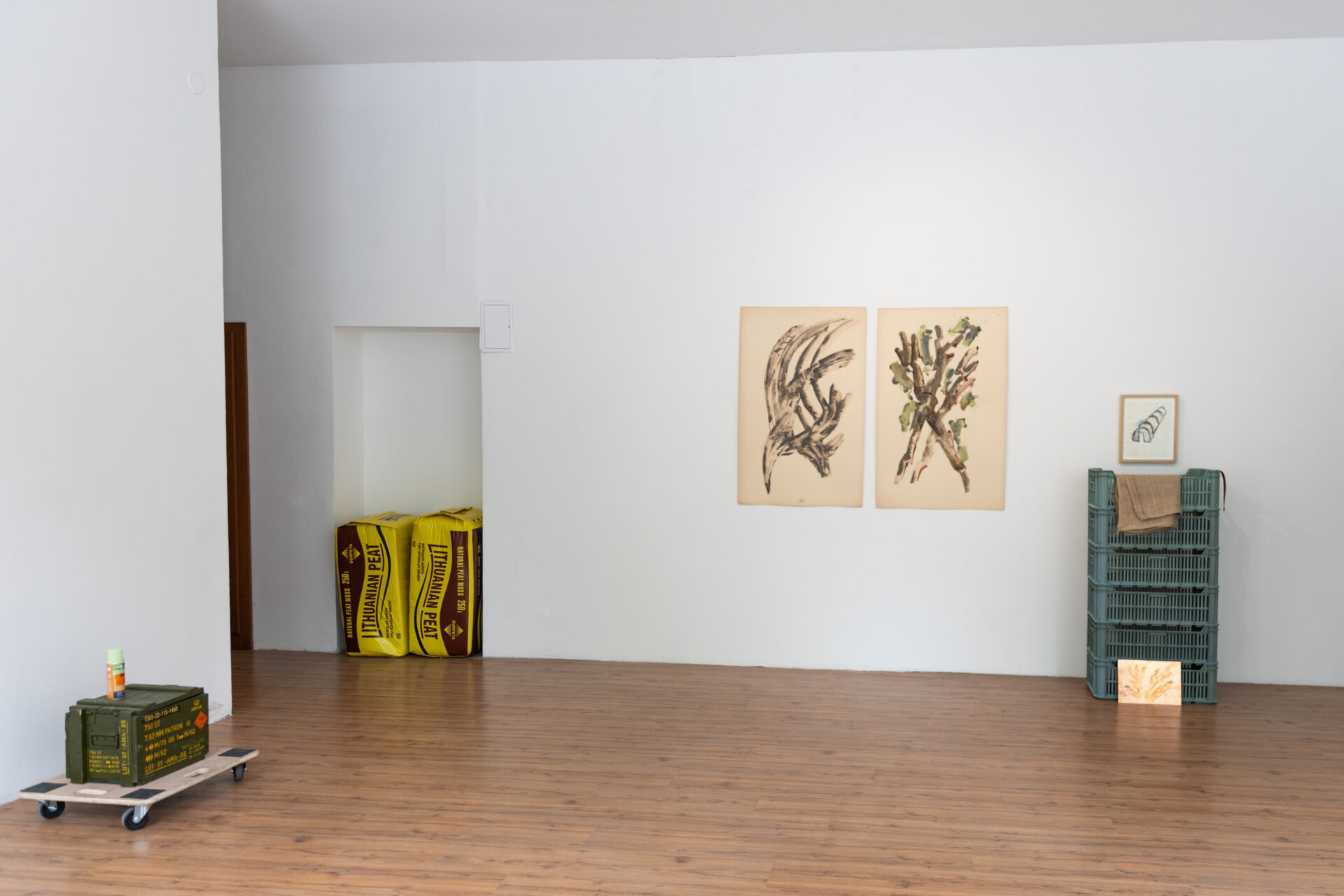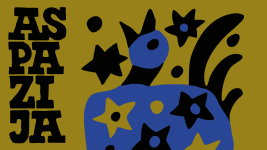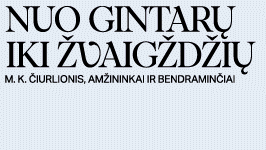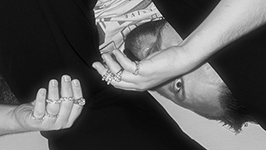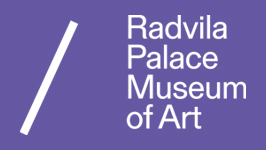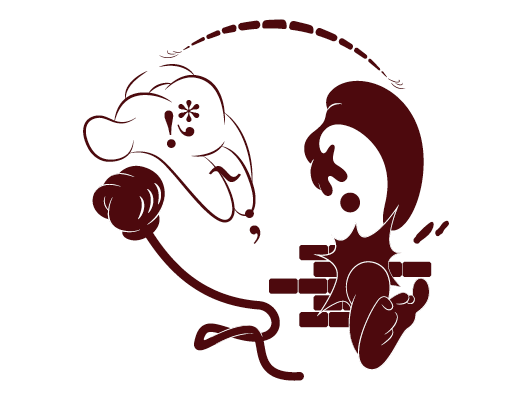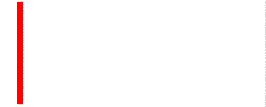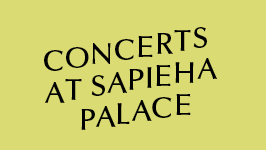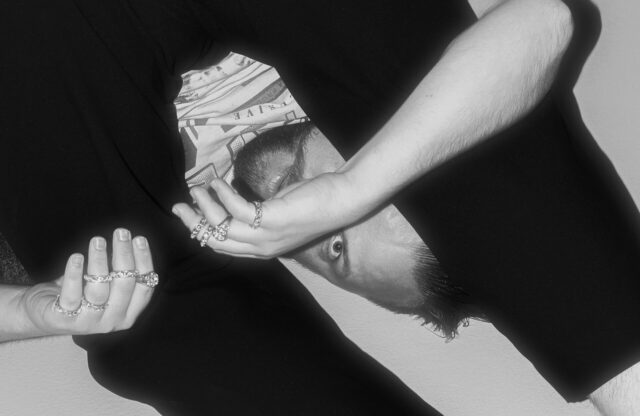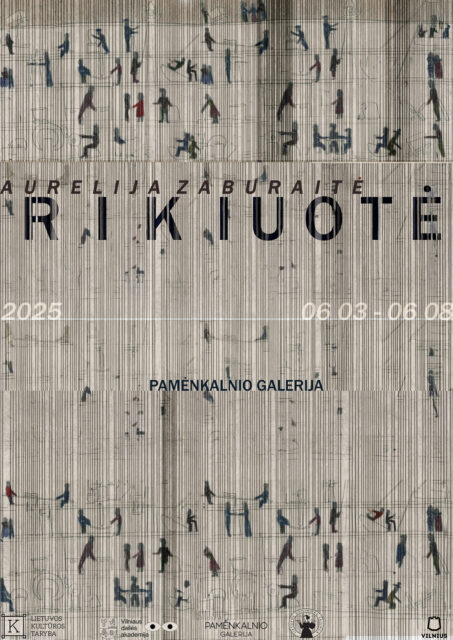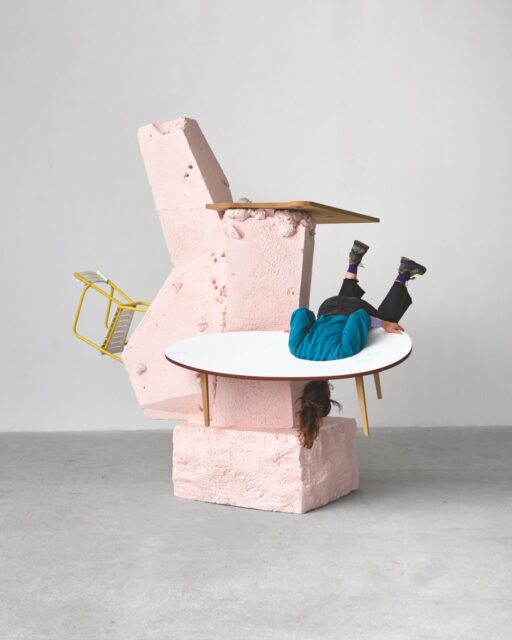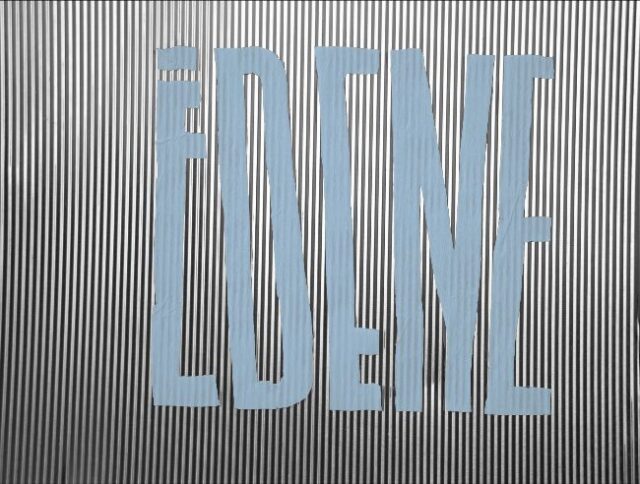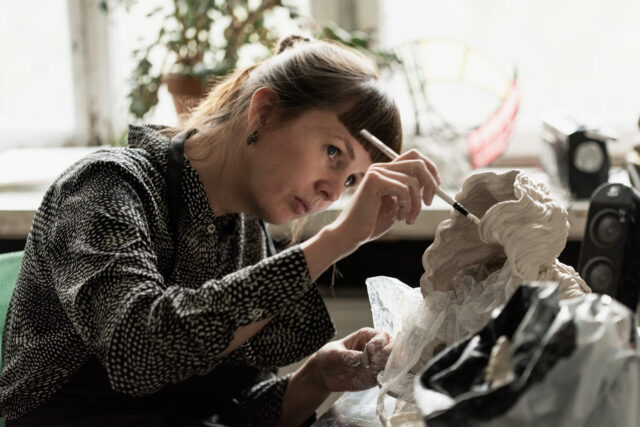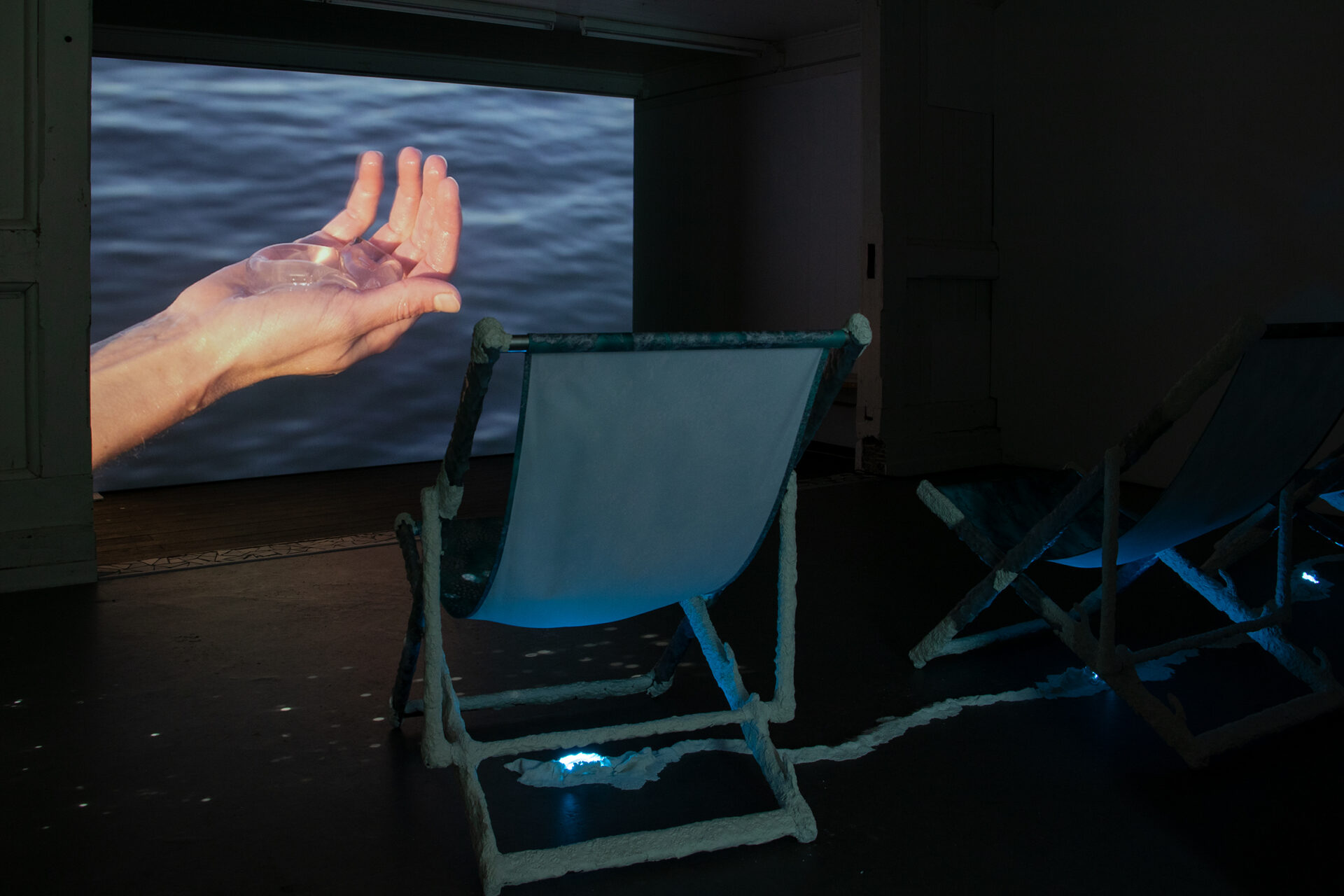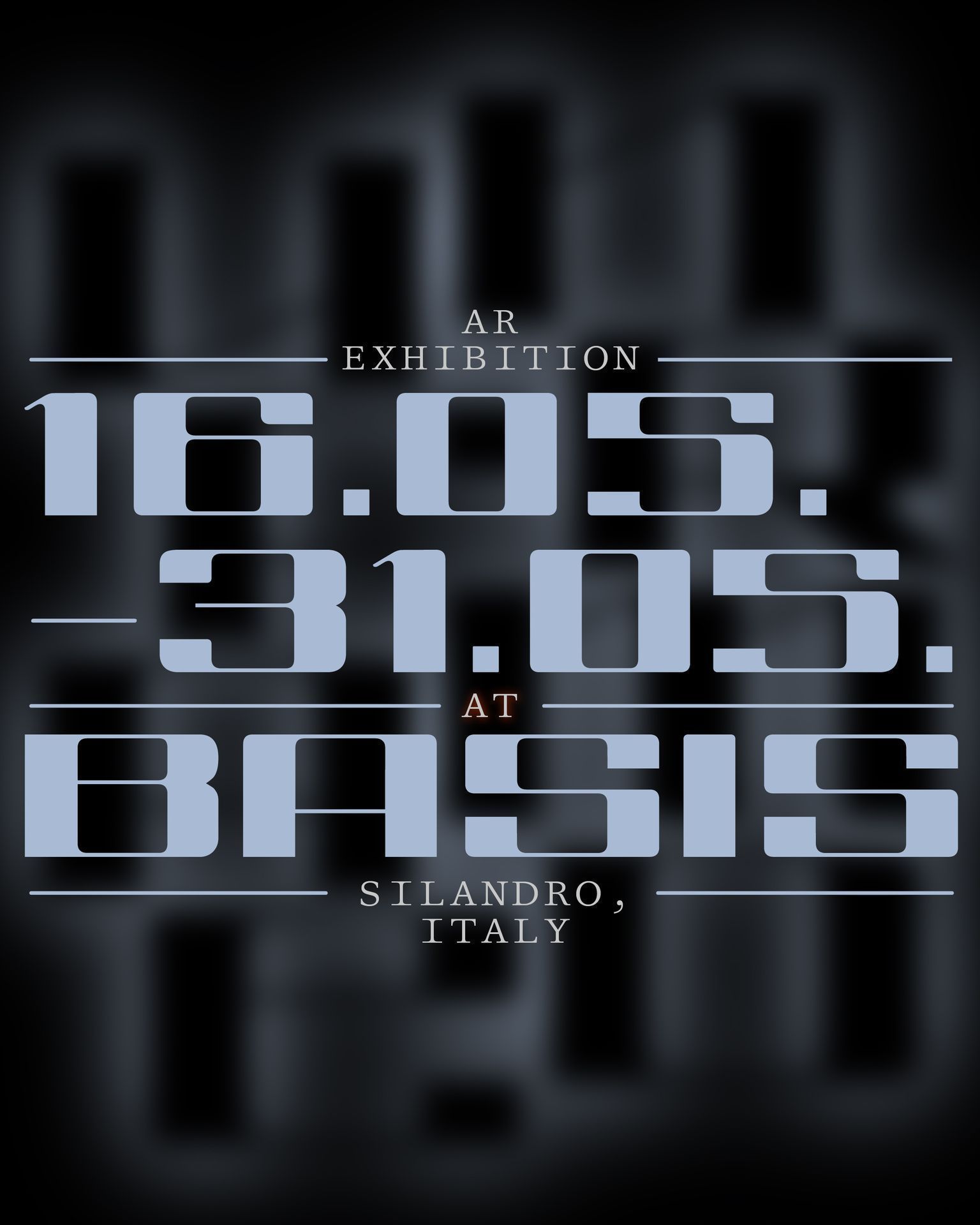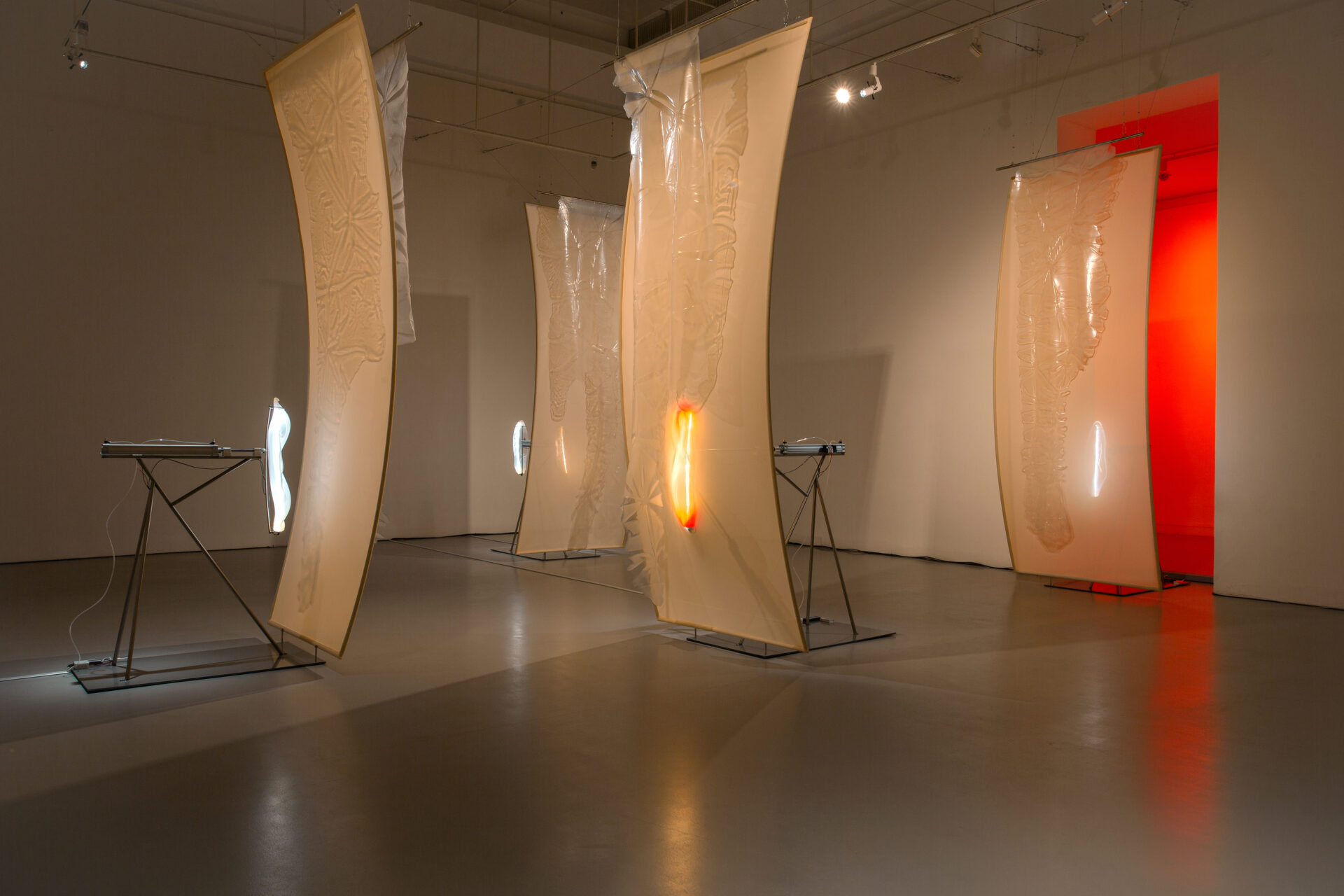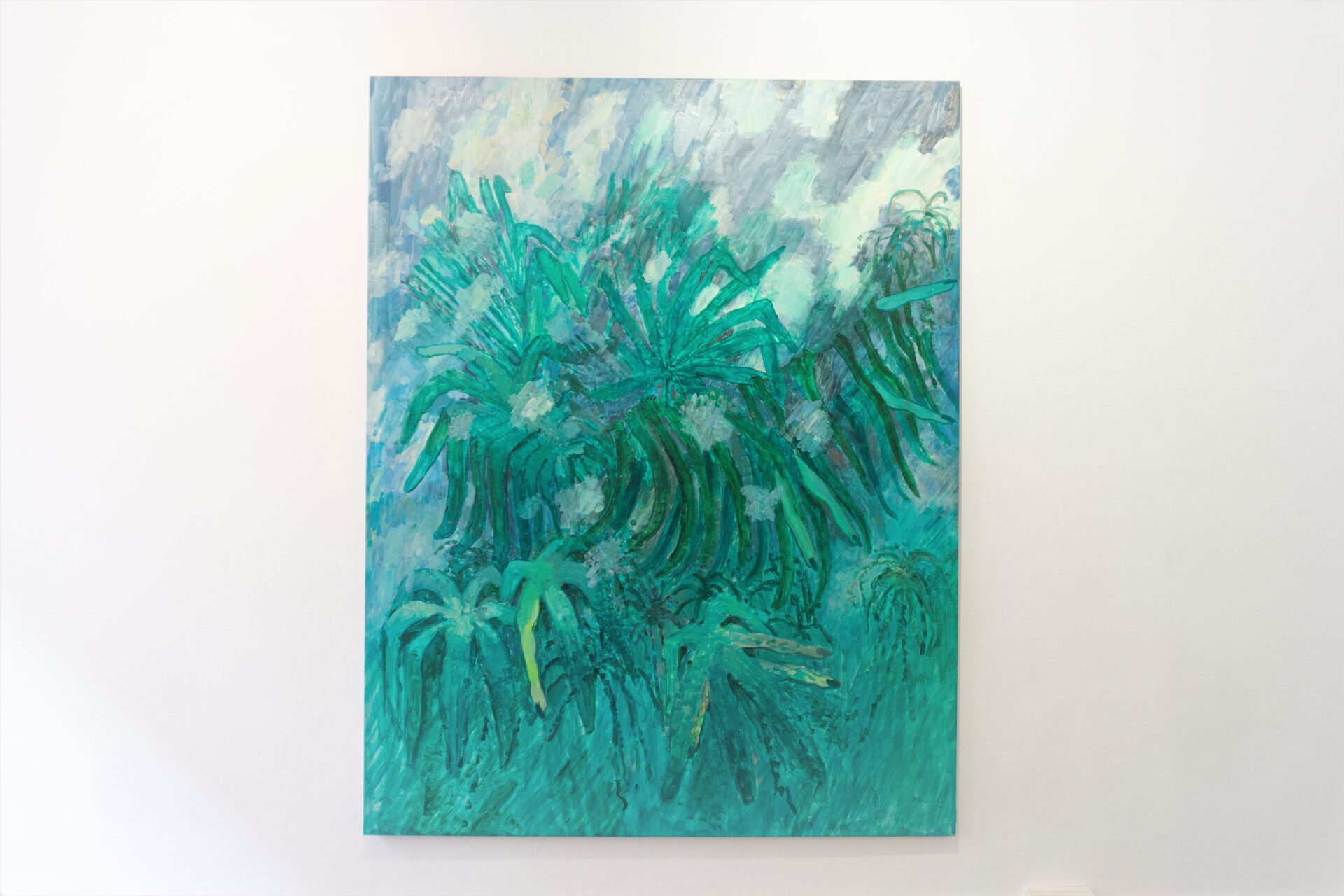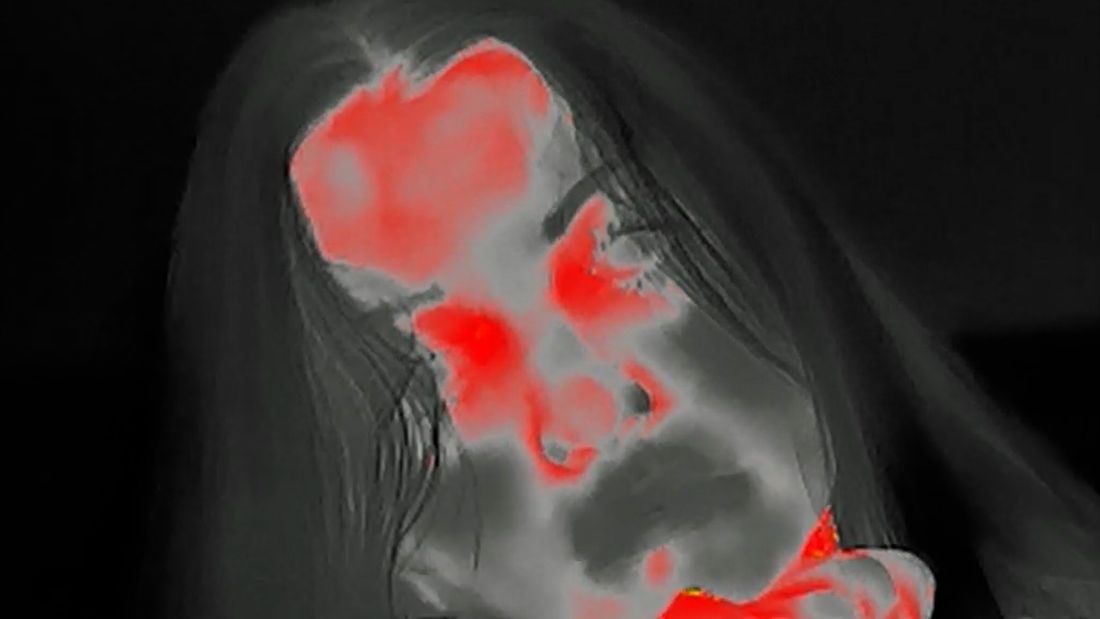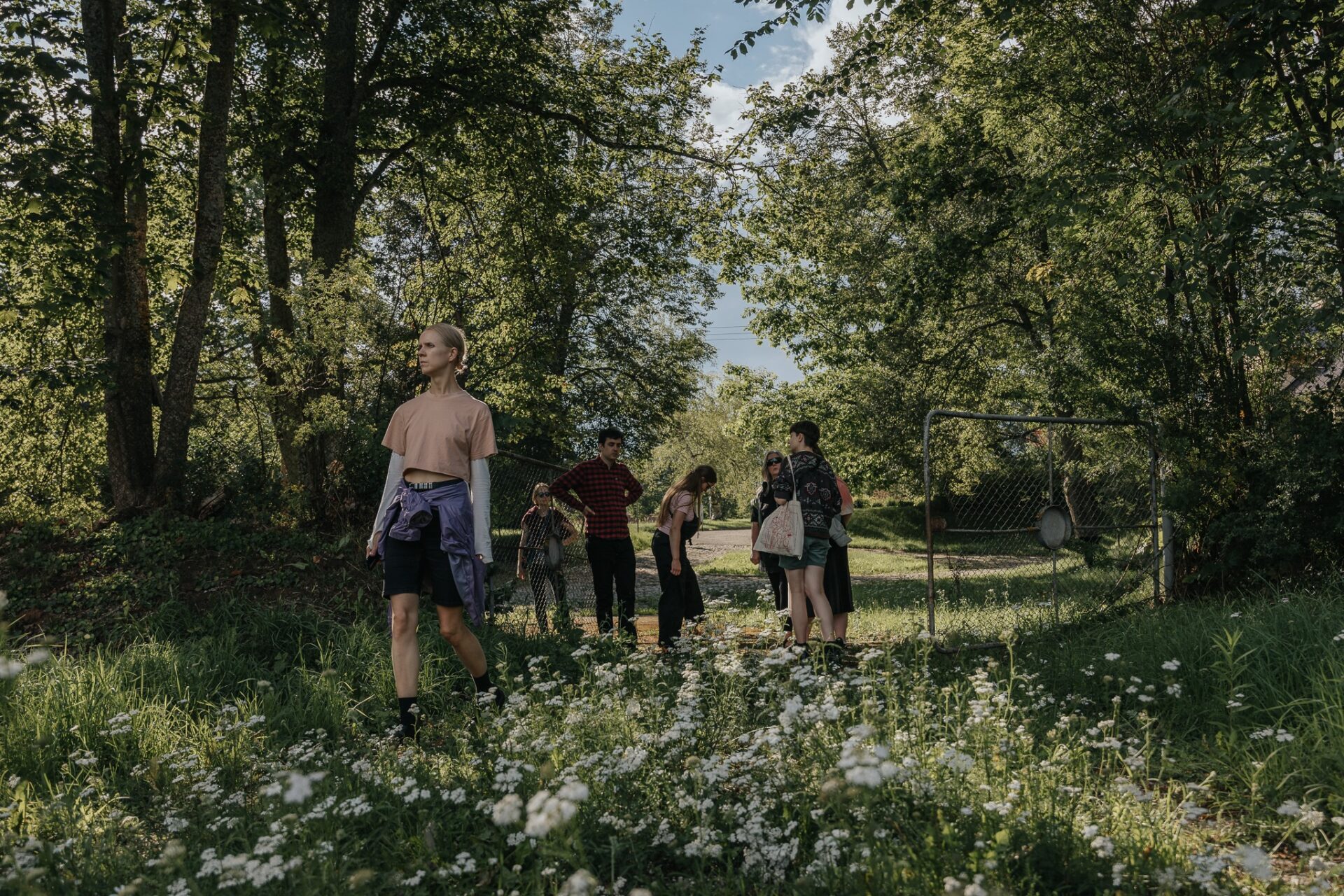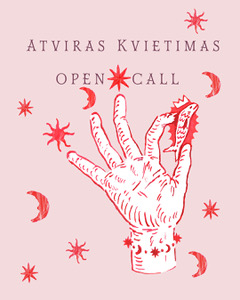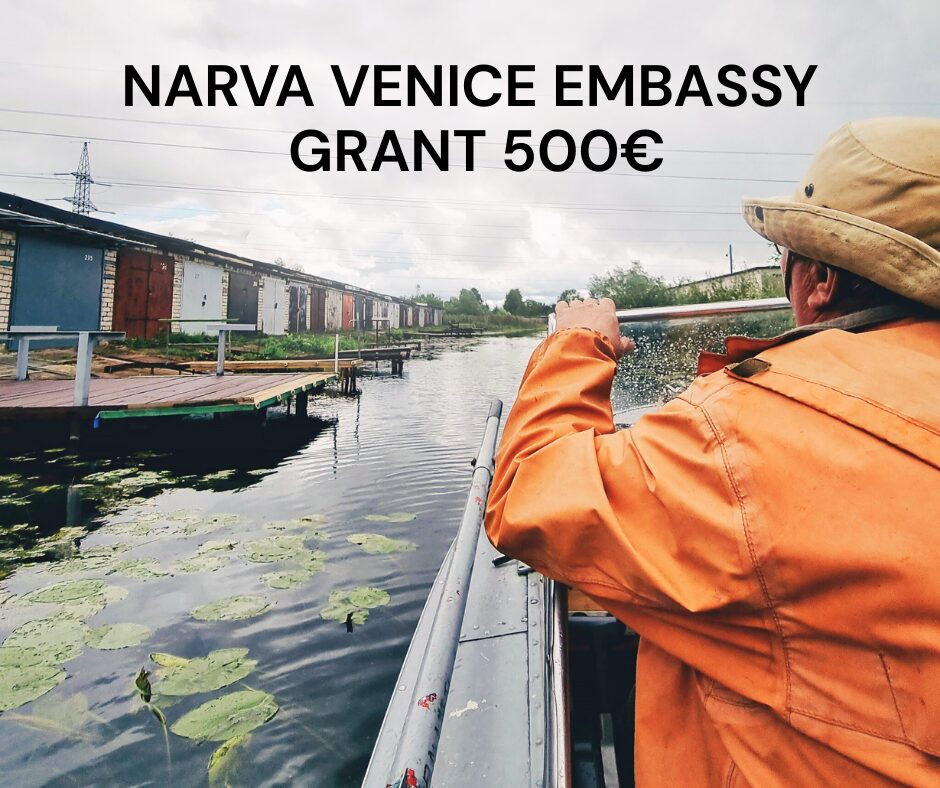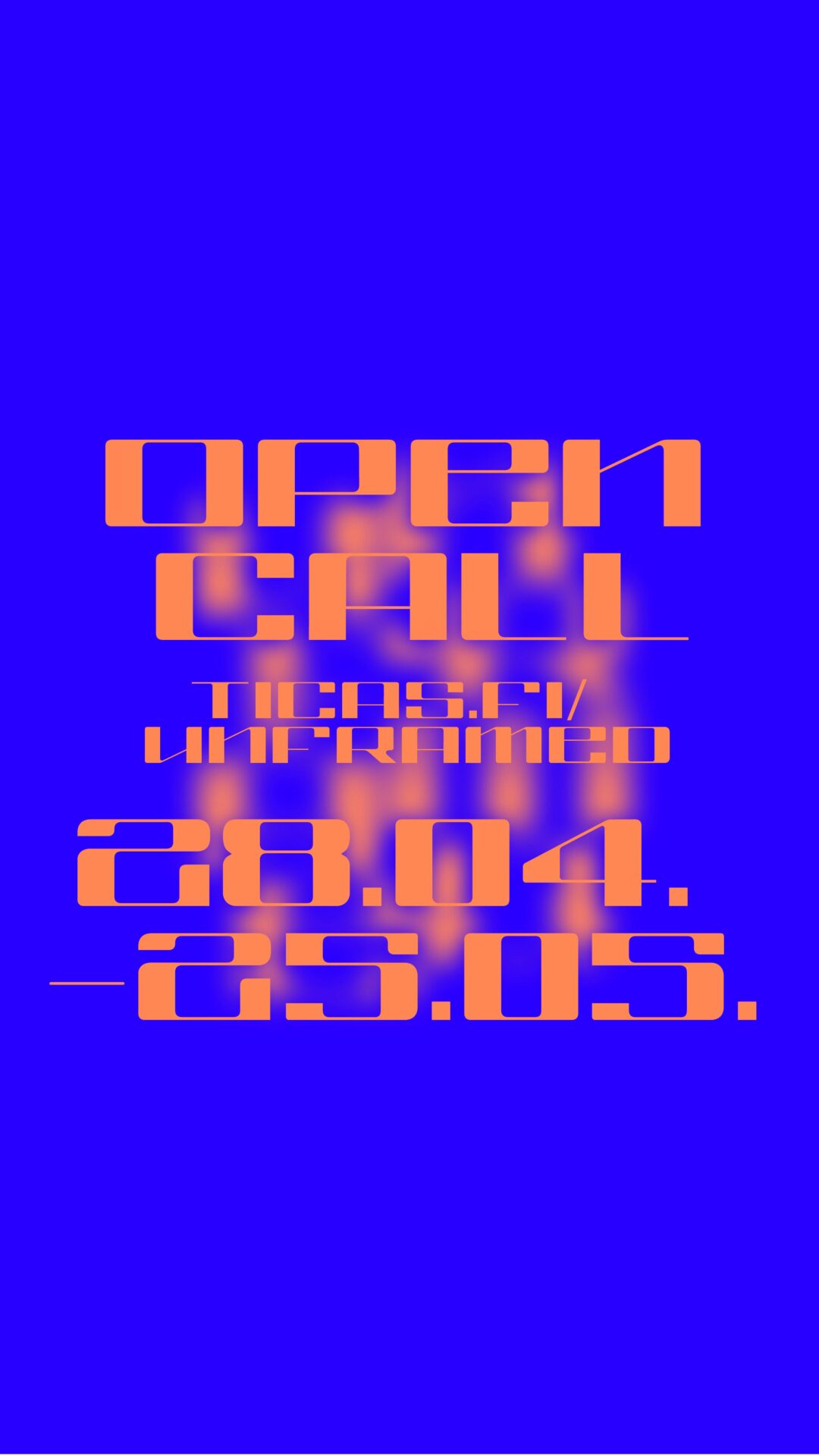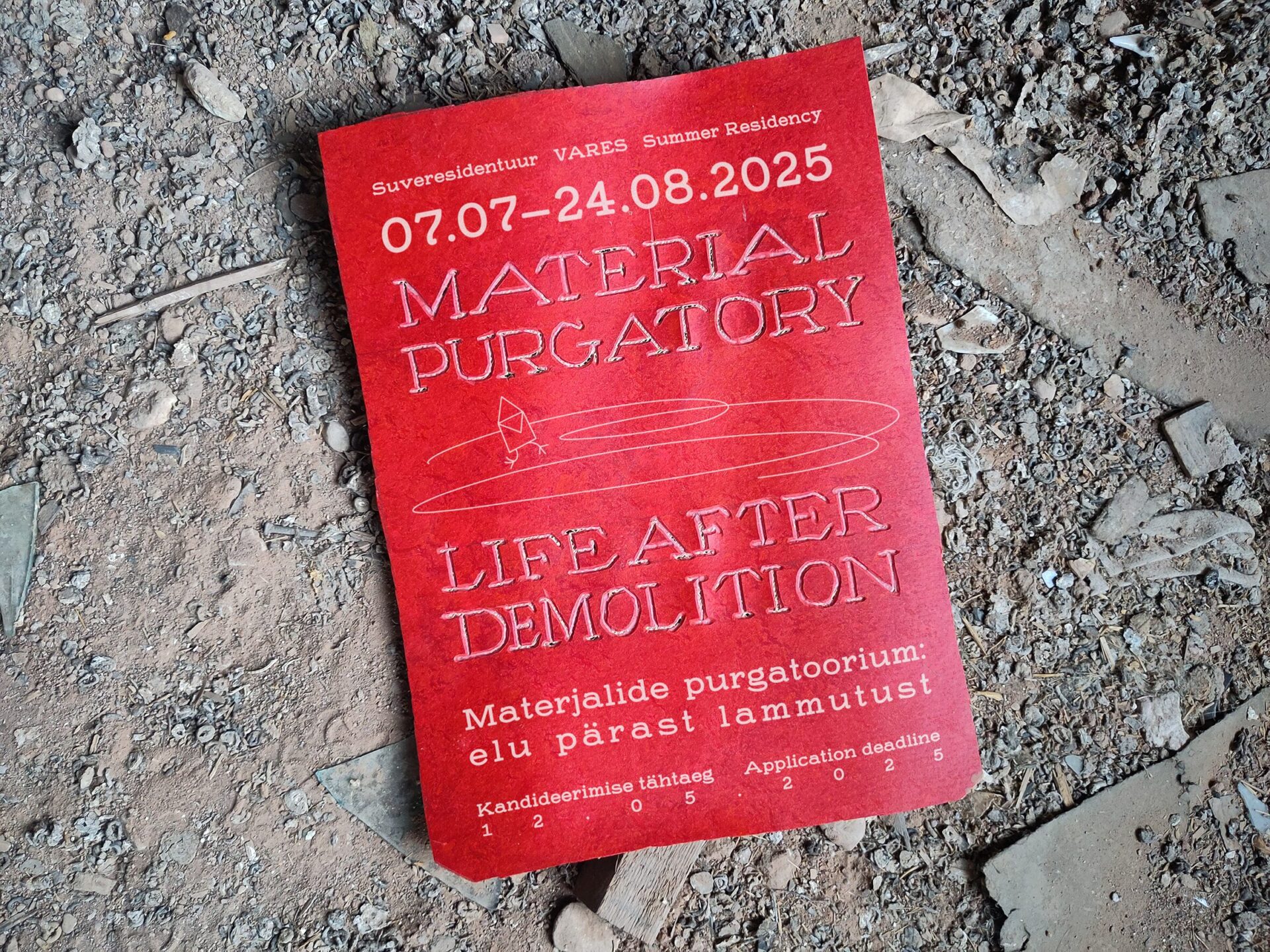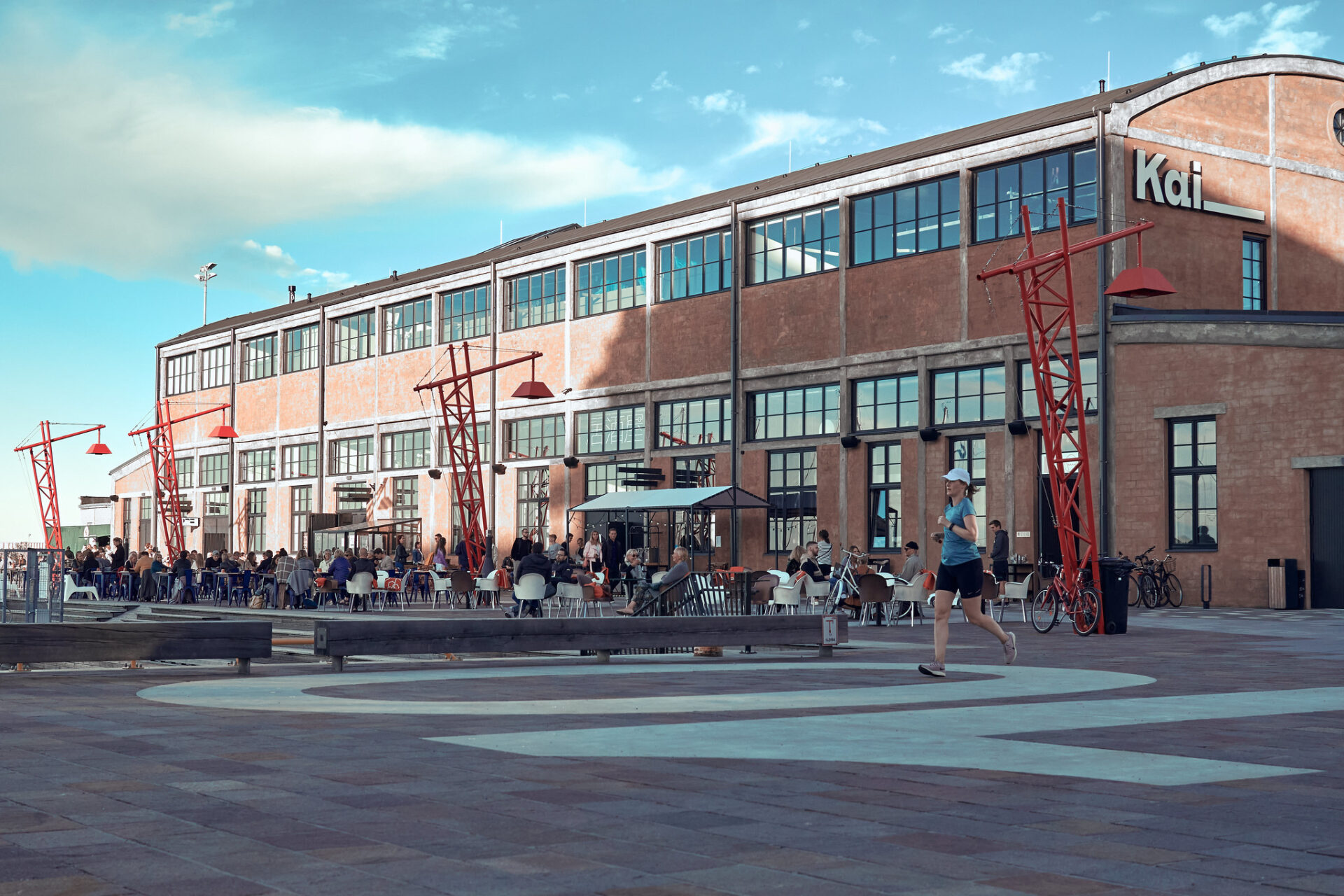“If faut cultiver notre jardin.”
— Voltaire, Candide
Voltaire ends Candide with this quiet insistence: faced with chaos, cultivate. Not as escape, but as method. Not despite history, but because we are thrown into it. And while history unleashes its destructive forces, the garden becomes a necessary site – for clarity, for repetition, for sanity.
For several years now, Vytenis Burokas has made a garden his studio. His homestead in Lauryniškės, a rural village in Širvintos district, 40 kilometers northwest of Vilnius, has become a physical terrain and a conceptual ground. There, tending and thinking blur. Fixing, placing, maintaining – each act becoming a quiet form of composition. Gardening, like drawing, unfolds in time.
Working in the garden, Burokas began to blur acts of cultivation with processes of artistic inquiry. What began as an “expedition to the homestead in search of new artistic expressions” gradually revealed deeper drives: connecting with long-lost neighbors, gathering fragments of the past, and composing with memory as both material and method.
At Drifts, Burokas presents his second solo exhibition with the gallery. Drawings and living plant elements, cultivated in raised beds, some built for artworks, others repurposed from military crates, are dispersed throughout the space. The boxes evoke logistics and latent mobility: a tension between rootedness and readiness to move. Glass bottles of wild apple cider punctuate the installation, grounding it in quiet acts of transformation and offering. Indirectly, the works carry residues of the garden – material traces, stained surfaces, the imprint of repeated gestures. They do not depict the garden; they metabolize it.
Some pieces are large, solid: wooden boxes reimagined as sites of cultivation and reflection, staging fragile drawings within and on top of their surfaces. Others are modest, almost shy, yet assert themselves with quiet persistence.
The drawings are not visual notes. Many of them are not representational in a traditional sense; they do not document the garden so much as metabolize its very conditions. Burokas’s drawings often feature fluid, near-evaporating stains overlaid with gestural, bleeding ink lines. The medium’s behavior becomes part of the composition: soaking, spreading, and interacting with the surface in unpredictable ways. What emerges is not a fixed form, but a process: a metabolic residue of an action, a memory, a spill. Forms drift between vegetal, anatomical, and totemic—neither fully figure nor object, but quietly suspended in between. The mottled texture of the cardboard, yellowed and fraying at the edges, reinforces a sense of organic decay and time-passed, suggesting fermentation not only as metaphor, but as visual logic.
In one work (Pottery, 2025), a bulbous, spiraling form – a living being or a vessel in repose – is rendered in black ink across a sheet of yellowed cardboard. An earth-toned, shadowy tide blooms: the accidental trace of soya sauce spilled and absorbed. The viewer observes the liquid’s path where it settled unevenly, creating a soft shadow that now evokes both groth and decay. The paper’s fragility – its softened edges and discoloration – adds to the sense that the image is not made but grown, like mold in a cellar or a memory rising to the surface.
Elsewhere, forms drift between human and vegetal, symbolic and intuitive. “Sometimes the drawings come before the thoughts,” Burokas notes. Motifs return, mutate, and decay. The process is cyclical, like fermentation: slow, unpredictable, alive.
Throughout the exhibition, Burokas offers cider brewed from wild apples gathered from trees growing near the remnants of the Second World War-era homesteads – places remembered only in oral histories, old maps, or subtle disruptions in a forest floor. “So in a way,” he writes, “this is cider from lost orchards.”
The offering is not incidental. Fermentation, for Burokas, is both process and principle – a metabolic transformation that parallels the slow, unpredictable ways in which knowledge, memory, and matter evolve. Just as microorganisms convert fruit into cider, so too do lived experiences and cultural residues – strained through observation and time – become material for drawing, installation, and reflection. Fermentation here is not preservation, but change: intimate, active, alive.
This logic of transformation continues in the sculptural works: wooden beds with living plants. Over time, they will be watered, cared for, and eventually returned to Lauryniškės. A cycle of growth, extraction, return.
Burokas draws on a lineage of artist-gardeners – from Claude Monet’s sensory landscapes to Ian Hamilton Finlay’s sculptural poetics to Derek Jarman’s apocalyptic resistance. For Burokas, cultivation is a way of thinking with time, memory, and decay. Gardening becomes a practice of maintenance, of embodied recollection. As Finlay once wrote, “Gardening activity is one of five kinds: sowing, planting, fixing, placing, maintaining… all these may be taken under the one head, composing.” For Burokas, this composition is also pedagogical. A teacher at the Vilnius Academy of Arts, his work models a slow transmission: fermentation of knowledge, porous boundaries between drawing, performance, and embodied thought. His alter egos, narrative gestures, and cyclical processes suggest that identity, too, is something cultivated – part memory, part myth, always in flux.
Uncertainty Gardens does not seek resolution. It renders cultivation as a way of being-with: with time, with landscape, with rupture. It holds the garden not as place but as method—shaped by weather, war, and care. It asks not only what we grow, but how we care for what remains: how we tend to fragile forms, take responsibility for seeds we did not plant, for roots that hold stories beneath the surface, for fruits shaped in silence, left for others to find.
Mėta Valiušaitytė for Drifts
‘Uncertainty Gardens’
Vytenis Burokas
8 May 2025 – 27 June 2025
Drifts gallery, T. Vrublevskio str. 6-2, Vilnius
Exhibition text by Mėta Valiušaitytė, art historian and curator
Text translation by Paulius Balčytis
Text editing by Rima Bertašavičiūtė
Sincere thank you to: Vaida Jonušytė, Dominykas Liaudanskas, Naglis Kristijonas Zakaras, Rokas Valiauga, Laura Kaminskaitė, Vadim Šamkov.
Vytenis Burokas work is financed by the Lithuanian Council for Culture.
The gallery’s programme is partly financed by Vilnius City municipality.
Photo reportage by Vaida Jonušytė
